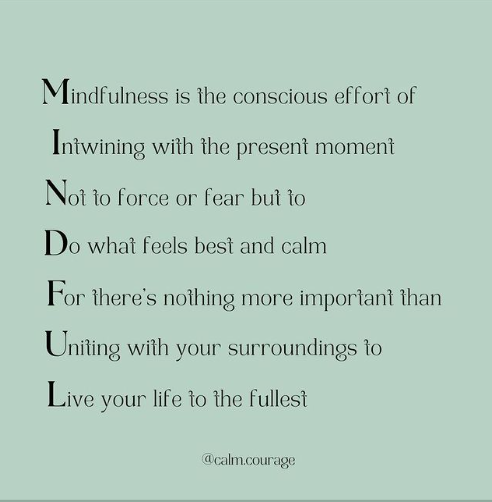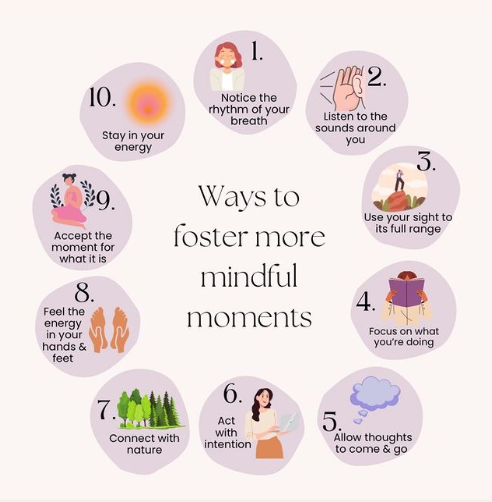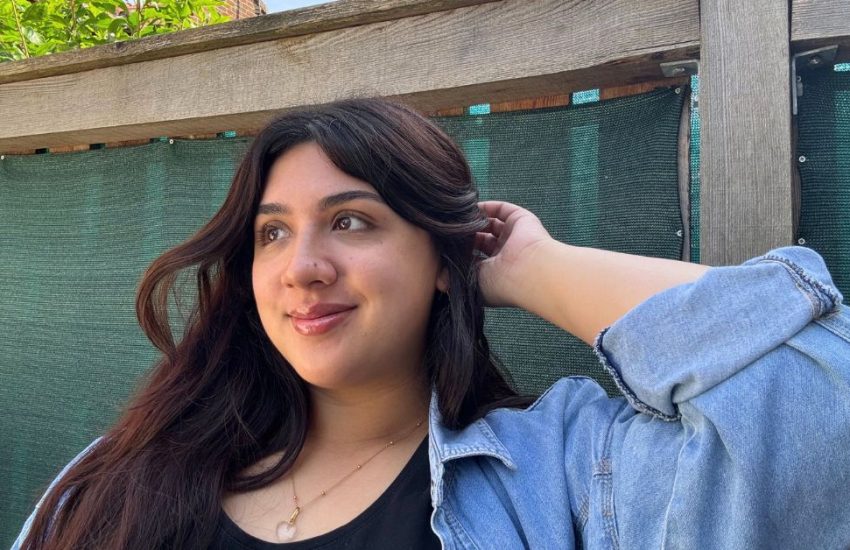Is Mindful Living The Key to Activating Your Best Self?
Mindful living. If this is your first time hearing the term, mindful living may sound like a way of living that fills your mind. But it’s quite the contrary. We’ll get into why in just a sec.
See, we all have the natural ability to practise mindful living. There are even times when are mindful without knowing.
For me, mindfulness was a complete phenomenon until I decided to explore my inner world through meditation thanks to anxiety and stress (maybe “thanks to” isn’t the best term *facepalm*).
However, it was because of my lack of focus on my mental health that I discovered mindfulness. It’s now one of the main practices that help me to function better emotionally, mentally and even physically in life.
Do you find yourself distracted by thoughts? Anxious about the future? Unsure about how you feel or how to act? If yes, mindful living, i.e utilising mindfulness as a life practice, is worth exploring.
In a world flooded with mindset and self-development quick fixes, is mindful living the answer to activating your best self and reaching your highest potential?
Allow me to guide you through the art of mindful living and ultimately answer if it’s the key we’ve all been looking for.
Where does mindfulness originate?
Mindfulness originates from Eastern philosophy and meditation practices in countries including India, China and Japan.
The practice is integrated into religious and spiritual traditions to this day despite the first mentions of mindfulness being found in the teachings of the Buddha 2,500 years ago.
Mindfulness is ultimately present moment living. It’s a journey of self-discovery and inner peace. Sounds perfect, right?

Let’s work our way through the ancient but oh-so-present practice to discover if mindfulness is the key to activating your best self…
Mindfulness counters self doubt
For many, a healthy mind and a healthy body are equally important in life. This comes as no surprise because an unhealthy mind can have detrimental effects on our lifestyle and life choices, in the same way as poor physical health can.
For example, when faced with self-doubt, goals such as starting the business of your dreams can seem like an insurmountable task. Similarly, attempting to run a marathon without prior physical fitness training is difficult to say the least (I would likely fall on my face after a mile or two).
Thus, it’s plain to see why a healthy mind is crucial when wanting to achieve entrepreneurship, a fitness goal, a creative goal and the likes, and also to overcome difficulties in life.
It’s true that our mind is our greatest instrument and our worst critic.
It took 6 months of mindfulness practice to counter my self-doubt enough to be able to replace it with the self confidence and compassion needed to accept my first contract as a self-employed copywriter.
If it wasn’t for mindfulness and meditation, I would have taken much longer to muster up the mental strength and confidence to go to a client meeting, or worse yet, never gone to one at all, despite having numerous years of copywriting and business experience.
My negative self-talk (inner critic) that loved to spew words of self-doubt and shame was the main culprit. Listening to its critical and often cruel words became habitual.
That being said, it’s important to remember good and bad days are normal when it comes to self-doubt and negative self-talk.
But, take it from me, mindfulness can build the mental resilience and strength we need to counter its negative ramblings that prevent us from persuing a goal and gaining confidence and courage.
If you look at it another way, the opposite of self-doubt is self-confidence. Thus, mindfulness can help flip the script in your mind that tells you that you’re not capable, when in fact you are. It’s just that goals take studious amounts of time to achieve, but that’s part of the fun even when it doesn’t feel like it a lot of the time.
We won’t wake up one day after practising mindfulness and have the confidence of James Bond. But, slowly but surely, we will see the benefits through our actions, likely with trials along the way that build our courage.
So, how do we actually practise mindfulness?
To use mindful living to your biggest advantage, it’s crucial to build more mindful moments. To do this, start by building awareness of your thoughts and actively catch yourself digressing in negative self-talk.

Mini self-doubt and negative self-talk mindfulness practice:
- Catch yourself thinking negatively about yourself or your capabilities
- Ask: Is this true? Is this kind?
- Counter your negative self-talk with positive truths such as; I have the experience or I feel unmotivated right now, but that doesn’t determine my overall capability level.
- Continue practising this until you develop new, more positive beliefs about yourself
The more you catch yourself thinking negatively and counter your thoughts, you’ll be better apt at pushing yourself to take a step, however small, towards fulfilling a goal.
Altering the negative perspectives you have about yourself will benefit your inner world and life.
More mindful moments can transform an anxious mind
Another form of negative thinking we can tackle with mindfulness is anxiety.
Anxiety is mainly fuelled by self doubt, and fear and worry about the future.
Anxiety is what holds us back most in life by preventing us from taking the next best step. Its phrases can include, “this will go wrong”, “I’ll embarrass myself” or even, “I’m not capable of doing this”.
On a side note, it’s important to remember that not all thoughts about the future are negative or unproductive. Sometimes we have to contemplate the future, and also the past and the present to self-reflect. We do this type of introspection to learn and make the best moves in life and foster personal growth.
But, seeing as your brain is part of our being, it can run on autopilot a lot of the time (I know this all too well). It needs training just like physical muscles to filter out the unproductive and negative thoughts associated with anxiety. In turn, dialling down the affects anxiety has on your nervous system that lead to physical anxiety symptoms such as a racing heart.
By fostering more mindful moments, you train your brain to be more consciously aware of when you’re beginning to drift down ‘fear and worry’ alley because of anxiety, and choose a different route. And the more you do this, an hour will begin to feel like a string of mindful moments. Then your day, and so on.
You’ll start to realise you are not worrying about the future or beating yourself up half as much as you used to. Negative thoughts float away easier.
You’ll feel more and more like the person you have always wanted to be. You’ll walk into a room full of strangers with your head held high. You will start to trust yourself more and speak with more honesty and less fear.
Acceptance is key
We can’t talk about mindful living without mentioning acceptance. Acceptance in what context, exactly? Both the acceptance of thoughts and every moment.
When we develop the ability to accept our thoughts and feelings whilst simultaneously being actively aware of our surroundings and others without becoming overwhelmed or too judgemental, we’ve truly embraced the art of mindful living.
That sounds like a lot. But with practice, acceptance will level up your mindfulness skill and transform the way you see life.
We are all capable of judgement due to our psychological architecture and social norms and beliefs we’ve built due to past situations and things people have said to us.
For example, imagine speaking to an acquaintance. They say something that reminds you of a past situation that caused you pain.
Your brain and body will likely react to this similar situation. You may experience split second flashbacks as the associated negative emotions surge through your body.
This reaction is all too common and is a type of trigger response.
This type of situation encompasses the need for both acceptance of thoughts and the present moment:
- First, you can choose to recognise the similarities of the situation and the triggered feelings of the past.
- Then, acknowledge this moment hasn’t actually happened before. This is a different person, different place. Remind yourself that you can handle it in the best way possible with a fresh perspective.
- Now, accept your thoughts and feelings and practice self-compassion.
And that’s acceptance right there! It’s the “I know how I’m feeling and that’s ok. This is new and I accept what’s happening. I can focus on the here and now.”
Acting out of acceptance will ultimately allow your life to be filled with more understanding and ease and less negative bias’.
A positive mind is sparked by mindful living
From what we’ve gathered so far, mindful living is about cultivating mindful moments throughout our day. In turn, reducing negative and anxious thinking and developing more present moment and thought awareness with acceptance.
Thus, we cultivate a clearer mind! But, what do we do with all that free space up there?
There’s another transformative element to mindfulness, and that’s positive thinking.
We switch the game up from habitual negative and anxious thinking to skipping through a daisy field and falling in love with the air flowing through our long mane of hair (*clears throat*), ok, maybe not positivity to that extent, but do as you wish!
In real terms, we focus on actively recognising all of life’s greatnesses and possibilities. Consequentially, the mind starts to fill with a whole lot of sunshine; “That’s beautiful”, “I’ve got this!”, “What’s the worst that can happen”. “I’m so grateful for…”.
Only good things can come from thinking positively, as long as we’re also being realistic. That’s why I like to use the term “realistically optimistic” instead.
When adopting a realistically optimistic mindset, we focus on the good possibilities whilst recognising something negative may jump into the equation, and that’s ok (which again is acceptance).

A positive or realistically optimistic mindset can be strengthened through practices such as gratitude and affirmations, which I wrote about in my previous blog “Stop Negative Thoughts with 5 Uplifting Spiritual Practices”.
It’s about seeing the best in people, things and situations. It’s about remembering who you really are and what you want to do in a positive light, behind the mental barriers of self-doubt, anxiety and expectations. It’s breaking free!
Which leads back to the question of the day; is mindful living the key to activating your best self?
Mindful living is all about living presently and giving your best in every moment. It’s appreciating all you are, all you have and all that life has to offer right here and now.
I can’t think of any other practice that can help you strengthen who you are and discover who you truly want to be.
Mindfulness allows you to minimise what doesn’t serve a purpose in your mind, body and soul and focus more energy on cultivating more positivity and motivation to push towards where you want to be in life.
So, in other words, practising mindful living allows you to become your best self, higher self, true self or whatever you wish to call that remarkable version of yourself that you deserve to become.
And the great news is you’re already on that journey, and mindfulness can speed up your transformation tenfold.
How to start mindful living
Mindful Mondays
In order to incorporate mindfulness in your life, start small. Try Mindful Mondays. Challenge yourself to stay present on this one day of the week. The first step is to remember Mondays are for being mindful (that’s a mindfulness test in itself).
Next, the good old catch yourself thinking game we covered earlier. At first, it can be difficult to discern between positive and negative thoughts. So, start by building awareness of all thoughts.
Second, dig a little deeper by noticing how they affect your mood, words and actions. Take one thought type at a time.
You’ll then more easily discern between positive and negative thoughts and give energy to the positive ones.
Practice this for as long as you need. You don’t have to partake in Mindful Mondays every week. But always return to the practice to expand your mindfulness skill. Then practise on a Tuesday, then a Wednesday… until mindfulness begins to spill into everyday and becomes a healthy habit.
Mindful walking
Hmm.. mindful walking. Sounds peaceful! However, mindful walking is less about actual walking and more about your focus and awareness.
Walking is one of those things we can do without thinking. Like breathing or even driving.
So the challenge here is to keep your focus on the present moment whilst walking:
- Take in your surroundings
- Notice your breath
- Hear the sounds around you
- Notice smells
- Recognise the air and clothes touching your skin
Now, what are you thinking from moment to moment? Could be anything, really, with the billions of neuronal connections we have in our brains.
But just because we’re capable of thinking a dozen things when doing the mundane or something that comes naturally, doesn’t mean we should if we wish to cultivate more peace and presence. And that’s the ultimate goal, right? To allow you to be you with no restraints and to enjoy all the wonderful internal feelings of acceptance, compassion, motivation and hope?
And that’s ultimately what mindful living is all about.
Being aware of your physical self and surroundings takes the focus away from the negative ramblings of your mind and onto more positive and productive thoughts.
Is it time you gave mindful living a go?
I hope you enjoyed this introduction into mindful living and activating your best self.
Do you agree that mindful living is the key to activating your best self? Or what did you enjoy most about this blog? Let me know in the comments below!
I love mindfulness, so you can expect more content on the practice on my socials. Follow me there for more!


